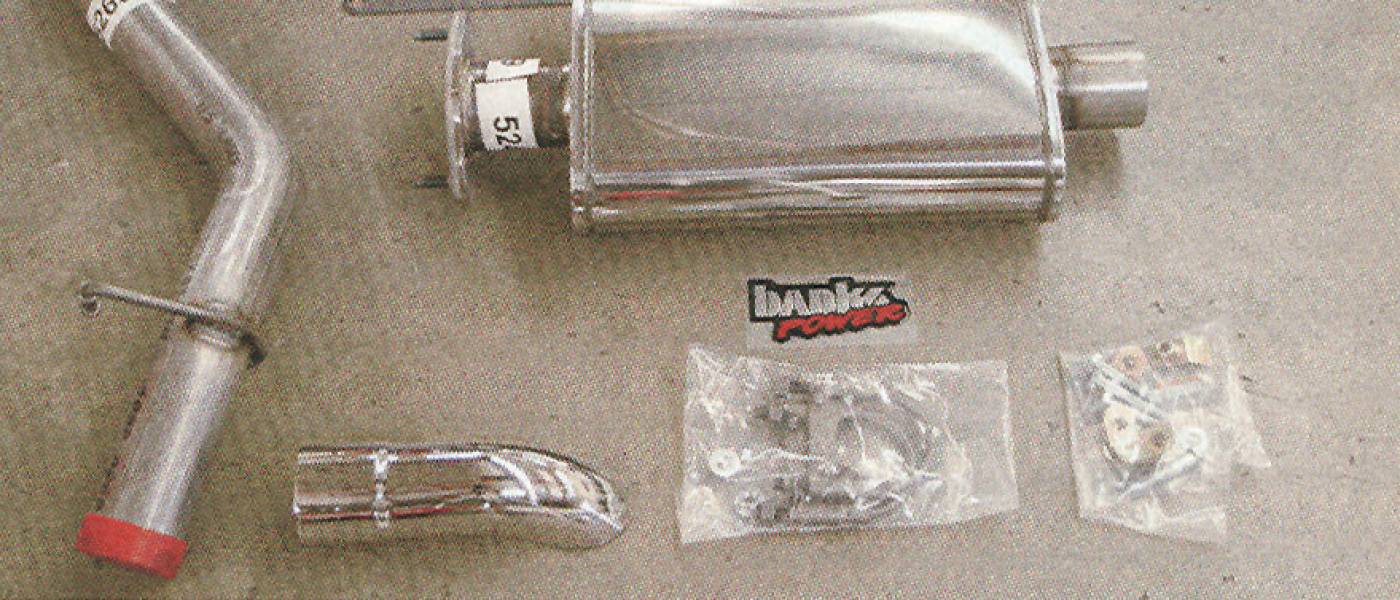Breathin’ Easy
4 Wheel Drive & Sport Utility October 2003
Banks TorqueTube and Stinger Exhaust Systems for Jeeps
| The Banks Stinger and TorqueTube exhaust systems we had installed on our project TJ included: the stainless Dynaflow muffler; stainless 2-1/2-inch tailpipe; chrome turndown tailpipe tip; stainless-steel exhaust header with 1/2-inch flange; high-temperature gasket; and installation hardware. |
Squeezing more performance out of your Wrangler’s 4.0L I-6 engine is easier than you think, and a good place to start is with your vehicle’s exhaust system. For some reason, auto manufacturers continually overlook the fact that a performance-tuned, free-flowing exhaust system will greatly increase a vehicle’s powerband and fuel efficiency. In a perfect world, vehicle’s would already come with these exhaust systems, but because they don’t, manufacturers such as Gale Banks Engineering consistently step up to the plate, designing systems that will unleash you vehicle’s untapped power.
Banks Engineering has been a leader in the performance exhaust industry since 1958. The company is renowned for its turbo designs, gas and diesel exhaust systems, exhaust braking systems, and the quality engineering that goes to each component. It has recently released its new performance exhaust upgrades for the ’91-03 Jeep 4.0L I-6 engine and Jeep Wrangler exhaust, the TorqueTube Exhaust Manifold Assembly and the Stinger Exhaust System. The TorqueTube Kit is comprised of a stainless-steel header, head pipe (optional), a high-temperature gasket, and hardware. The Stinger kit comes with a stainless-steel, straight-through Dynaflow muffler, a 2-1/2-inch tailpipe, and a stainless turndown tailpipe (exhaust tip). Both kits include all the necessary mounting hardware, the comprehensive installation manuals, and the components carry a limited lifetime warranty. One system can be installed without the other.
The exhaust tubing for both systems is mandrel-bent for a restriction-free flow. Banks’ testing of the Dynaflow muffler has shown a 140 percent increase compared with the OEM muffler. The TorqueTube header is designed to optimize exhaust flow and eliminate the problematic OEM cast manifolds. The stock manifolds don’t align squarely with the exhaust ports, causing flow restrictions. Banks’ 1/2-inch header flange is machined dead flat and precisely fits the port pattern, allowing free flow for escaping exhaust gases. The flange is fully welded to the tubes on both sides to prevent cracking and seperation. Both systems will increase the horsepower and torque of the vehicle.
Wanting to harness every last drop of energy out of our ’01 Wrangler, we let Banks Engineering have the vehicle for the day to install both systems. Within a matter of hours, the restrictive OEM exhaust was swapped out for the Stinger and TorqueTube setup. The most time-consuming part of the install was the removal and installation of the intake manifold assembly. Other than that, every component in the kit fit perfectly – even the rear tail pipe, which sometimes tends to be a problem. The Stinger tailpipe is precisely shaped so that it fits under the track arm bar and makes its way between the right rear damper and fuel tank without any clearance issues. There is more than enough room between these components, even if the axle was fully articulated.
Once the system was installed, we fired the engine and noticed a deep throaty growl that wasn’t overly obnoxious but just right. Even though the Wrangler isn’t known for its quiet ride, a deafening exhaust drone didn’t resonate throughout the interior of the vehicle. While test-driving the TJ on the highway, we immediately noticed the performance gains of increased torque and horsepower compared with the restrictive OEM exhaust system. With the TJ breathing a little easier, we can’t wait to hit the trails.

1. This is a cross-sectional view of the Dynaflow straight-thought performance muffler.
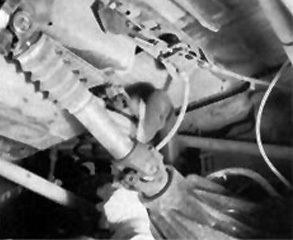
2. Mike Nguyen at Banks Engineering completed the installation of the two performance exhaust systems. Here he starts with the removal of the existing tailpipe and muffler.
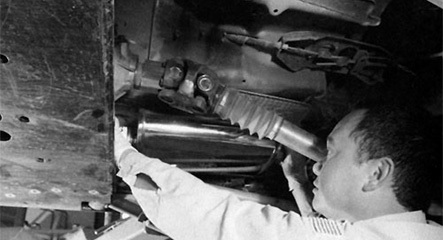
3. Once the old muffler and tailpipe are removed, the new Dynaflow muller is bolted in place. Before starting the installation, it’s a good idea to soak the existing and bolts of the exhaust system with penetrating oil.

4. After the muffler is in place, the tailpipe is mated to the muffler and ready for welding. Before welding, make sure the tailpipe will clear the track arm bar, rear damper, and fuel tank.
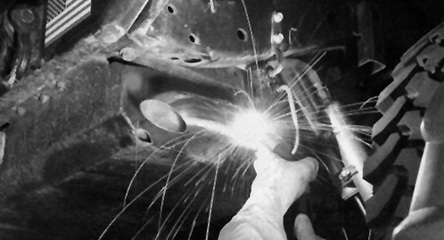
5. Finishing off the Stinger exhaust system, Mike welds on the mirror-finish exhaust tip. The tip end didn’t extend out any further than the gas tank’s skidplate, making the system less likely to be damaged while out on the trail.
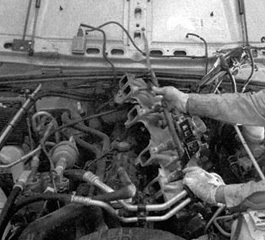
6. Starting on the TorqueTube assembly, Mike removed the intake manifold, making way for the stainless header. The header uses mandrel-bent primary tubes with seamless y-collectors for a restriction-fee flow. It is a good idea to soak the manifold bolts and oxygen sensor threads with a penetrating oil; this will prevent bolts and damaged O sensors.

7. The OEM exhaust manifolds are a two-piece, cast-iron design; the problem with these is that they don’t align squarely with the exhaust parts, restricting flow. In addition, the porous, cast-iron material doesn’t allow the exhaust gasses to smoothly flow out of the engine; these also have a tendency to crack over time.

8. Mike installs the high-temperature gasket and then the new header; it is constructed from heavy-gauge 409 stainless steel. The header fit perfectly without the need for any other modifications.
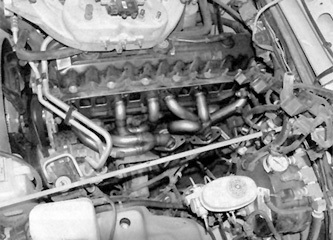
9. Here is the TorqueTube header bolted in place.

10. After all the header bolts were torqued to their proper specifications, the head-pipe (optional), intake manifold, and all remaining connection were reinstalled. Before starting the engine, all the engine components were double-checked.

